If there is one thing that visually defines the Edwardian era it is the Gibson Girl and that short-lived but highly distinguishable S-silhouette. The look was a far cry from the silhouette of the Victorian era: a skirt expanding at the waist with a very fitted bodice. Rather than being defined from a front view, the Gibson Girl silhouette emphasized the side angle with the expansion at the chest and backside.
Because I know we have a lot of readers who love the Edwardian era I thought it might be fun to dive into how this look came to be and how it was achieved.
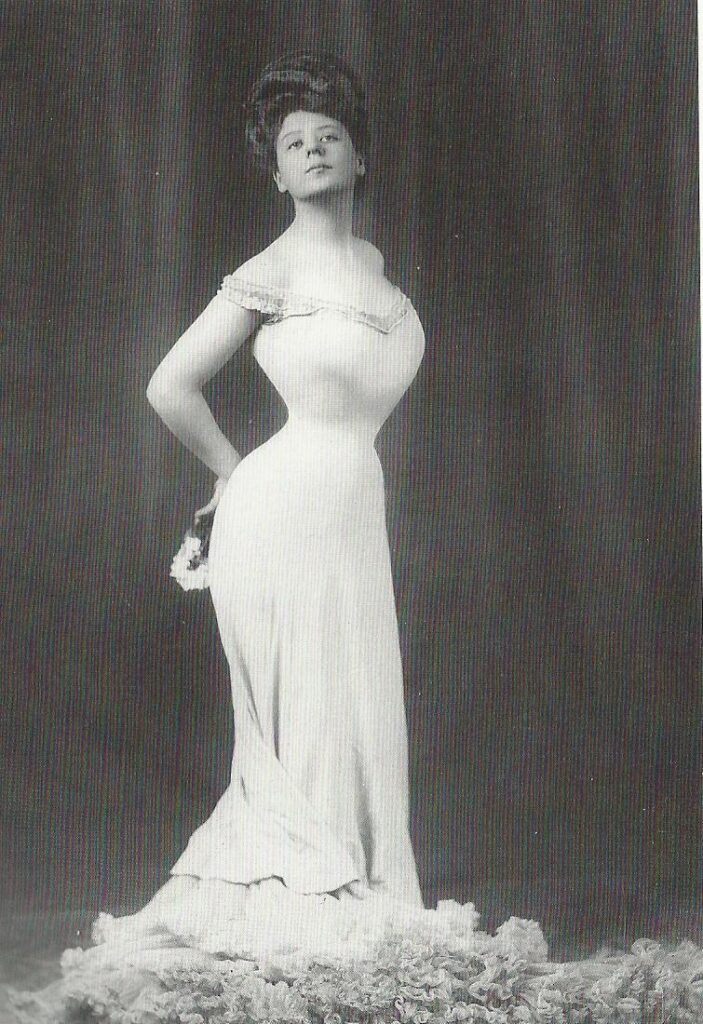
How did this look emerge?
I spent a lot of time reading and trying to come up with a solid explanation as to why the drastic deviation in the female silhouette took place. In the end, I have decided that it was simply a combination of it being a time for change and a larger emphasis being placed on comfort. We have seen before that women have been willing to adopt new looks based on new trends, even if briefly as with Regency styles and the S-silhouette. I think the reason women didn’t revert back to the Victorian silhouette was that more experimentation was taking place with styles that prioritized movement and comfort and there was simply no turning back.
Achieving the look
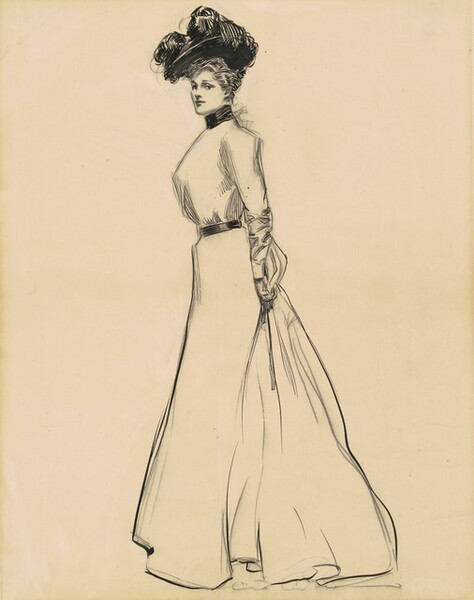
And comfortable it was, especially compared to previous clothing. The S-silhouette was achieved partially by the use of the “health corset,” along with a top that was much more flexible than that of Victorian clothing. But that doesn’t mean it was an easy look to pull together! My favorite part of researching for this post was finding out what was entailed in generating the Gibson Girl look and it was more than I had in mind!
Health corsets
Many history bloggers like to point to the corset controversy and the dress reform movement as the reason that the S-silhouette emerged, but I don’t put the credit there. I really think that it was just a matter of women becoming more active in society, moving around more, engaging civically, and being willing to try a corset that allowed more movement. I think that health corsets appeared as a bit of an experiment and so many people preferred them that they caught on.
So, what is a health corset? Also known as an athletic corset, hygienic corsets, and sanitary corsets (I won’t bother going into the reasons why in this post!), the primary difference between them and that of their Victorian predecessors is that rather than having firm boning to create the shape and ties in back to hold them in place they were made of firm materials to create the shape, sometimes with cords for light boning, and secured with buttons. They often still included ties in the back for adjusting but were more easily put in place without assistance.
Victorian corsets were held up by firm structure around the waist, with most being made without straps. Health corsets, on the other hand, had shoulder straps to keep them up.
The wonderful Sew Historically has a fabulous post on the Edwardian health corset here, including information on how to create your own.
SO – while in itself the health corset did not create the dramatic “S” curve, it helped. It moved the emphasis from the waist and hips to the bust. It also rounded over the hips, placing an emphasis on the back end.
But there was more to the S-silhouette than the health corset.
Corset covers
As Atelier Nostalgia points out, Victorian corset covers were often worn to smooth lines created by boned corsets and they were plain and meant to be discreet. Edwardian corset covers worn to facilitate the S-curve were flouncy and fabulous, worn to create a poof at the chest.
Padding, “bust improvers”, and “falsies”
If you’ve taken a close look at the images of the classic Edwardian silhouette, you may note that ruffled corset covers couldn’t be solely responsible for such an outward expansion from the chest, especially for some women. Many used padding to add an extra “oomph” to their Gibson Girl look.

These “bust improvers” were worn extremely similar to how a strapless bra is today, but the purpose was not to support but to add size.
To see the significant difference that a ruffled corset cover and padding made, please view the wonderful demonstration at Atelier Nostalgia here.
Bust bodices
Slightly less common but widely available was the bust bodice. This undergarment was also meant to emphasize the chest, but with one garment rather than multiple. It was often used underneath gowns when a corset cover would not have been suitable.
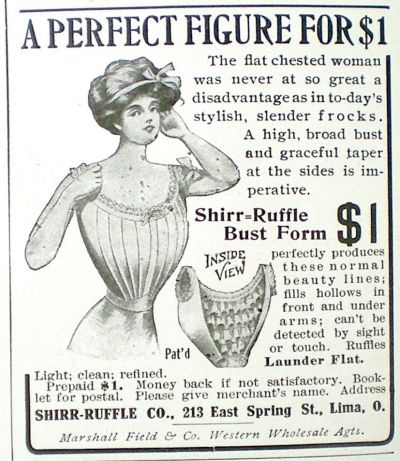
The bust bodice was a bit like a corset on top of a corset, but with fairly firm boning to create the desired poof at the chest.
Bustles
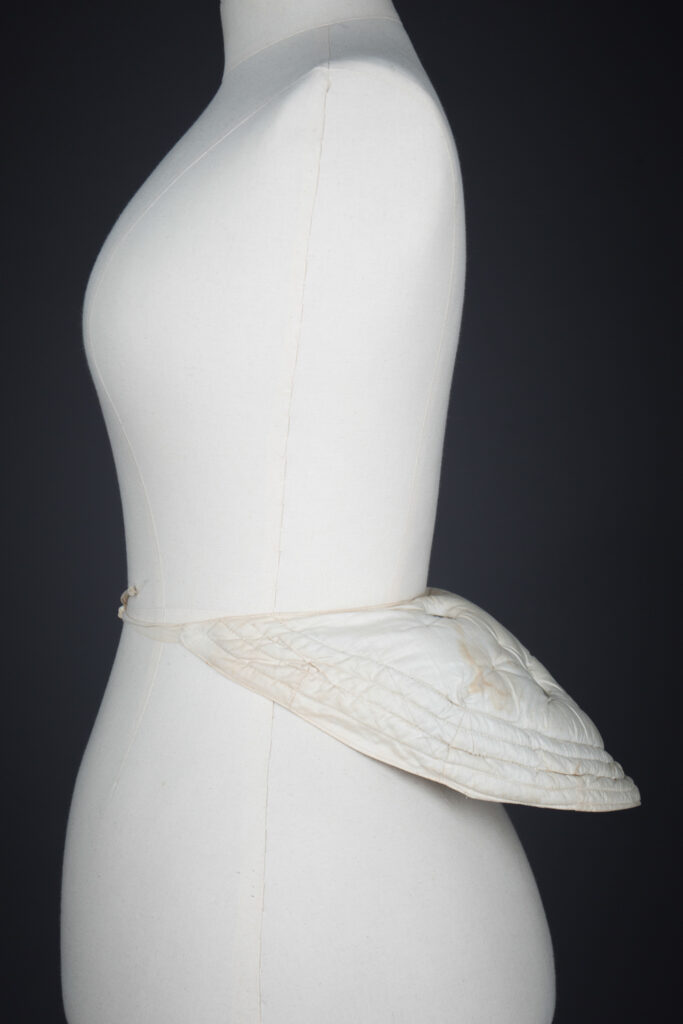
We’ve covered the multiple ways that women pushed their bust outward to pull off the S-silhouette, but what about the backside? The back of the “S” was achieved both through women simply adjusting their posture (true) and through a brief re-trend of the bustle.
Much smaller than previous bustles, the Edwardian “hip pads” were worn to create the subtle curve in the back that topped off the look. Worn over fairly fitted skirts, small pads were just the trick to achieve the look.
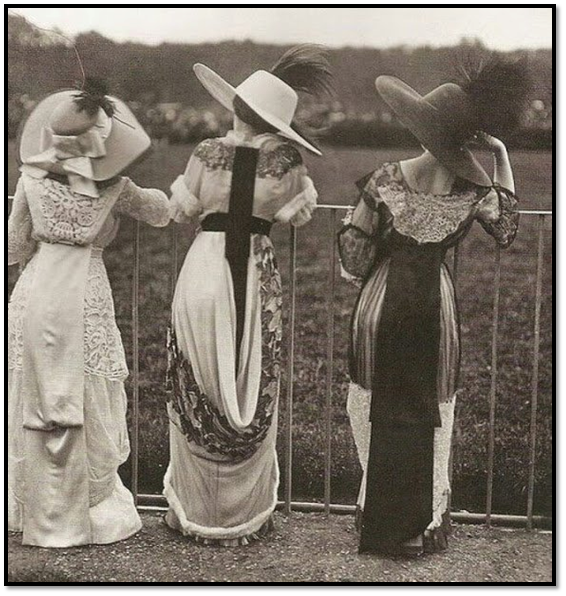

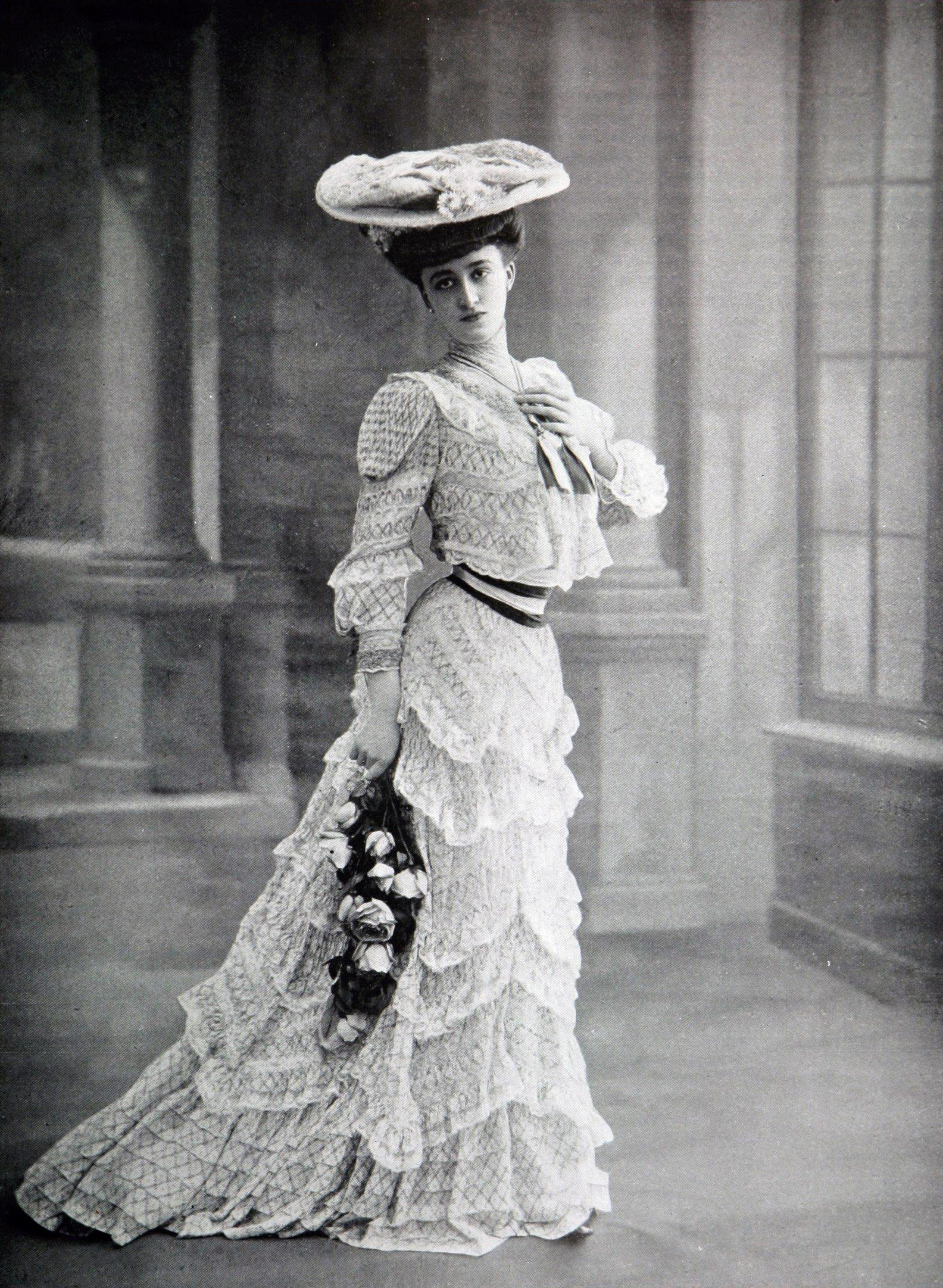
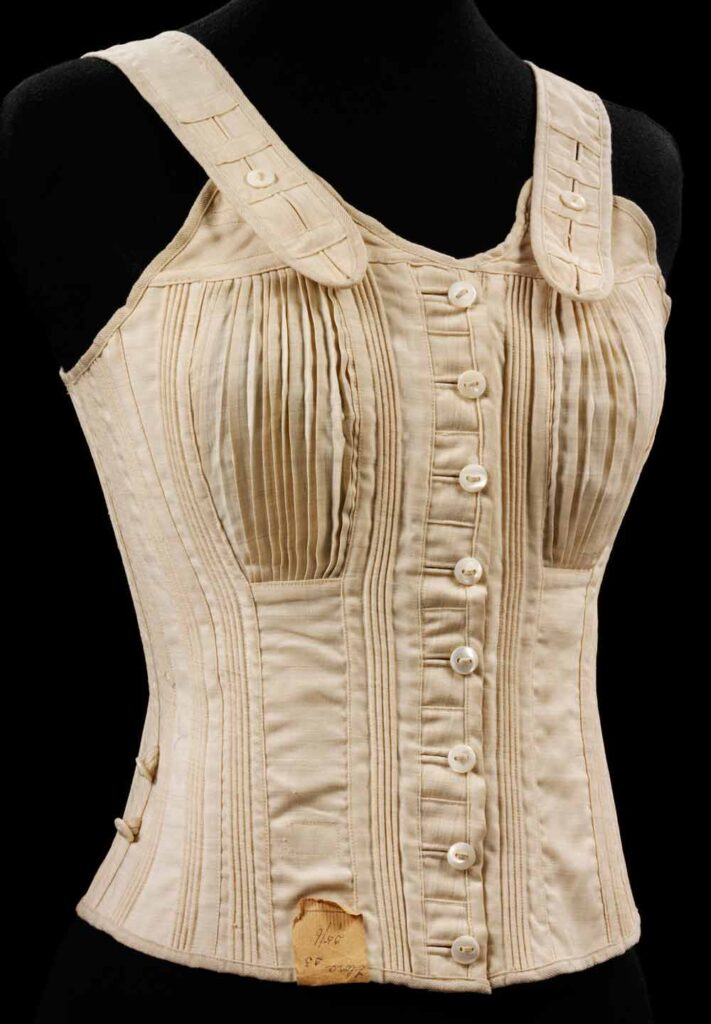
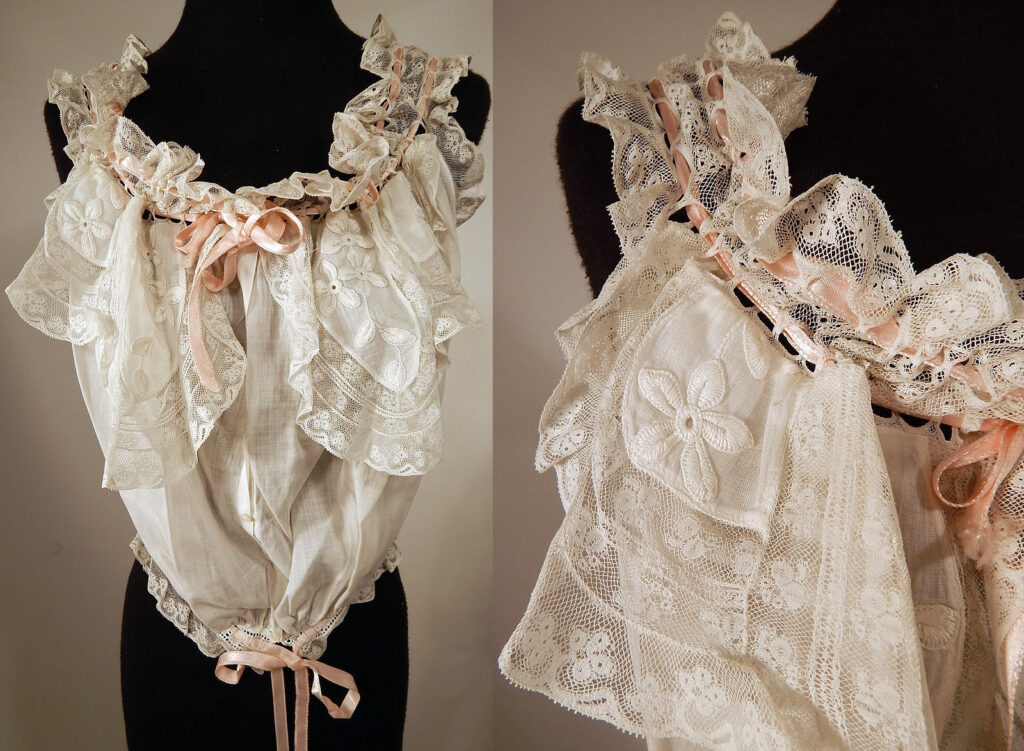
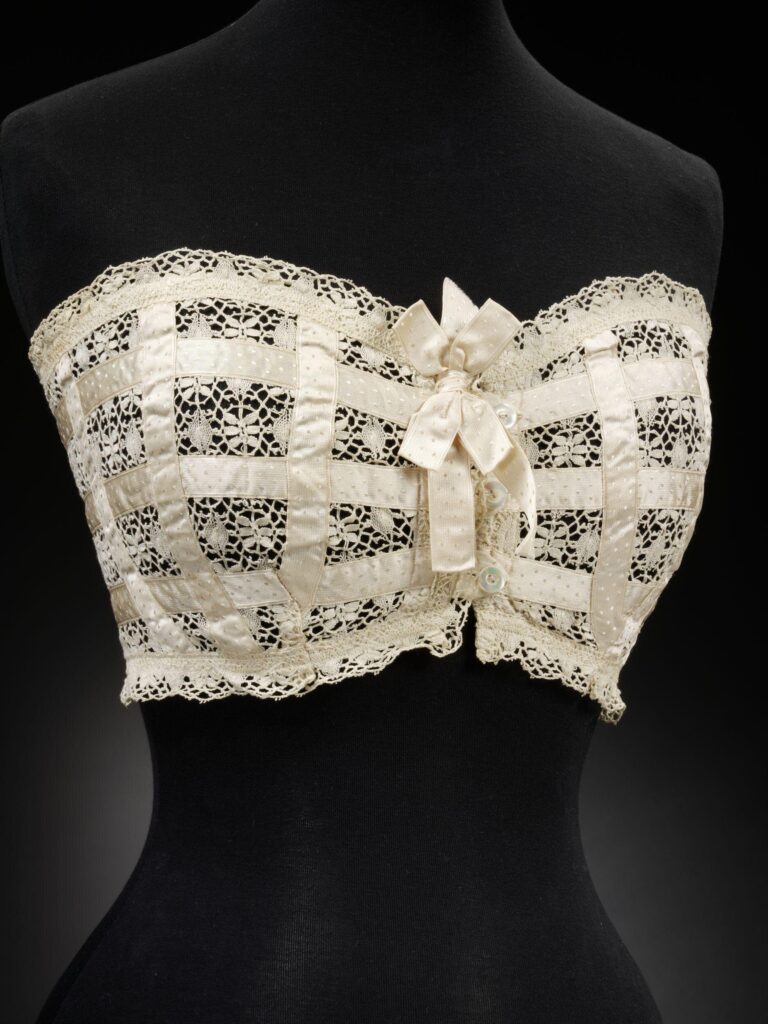
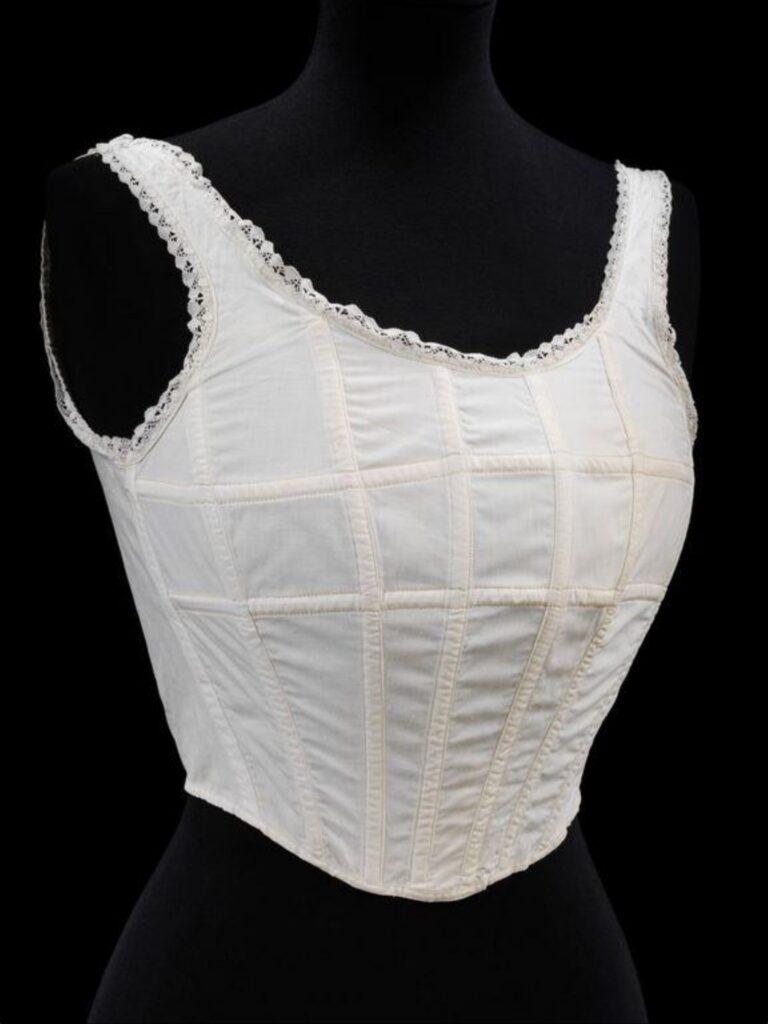







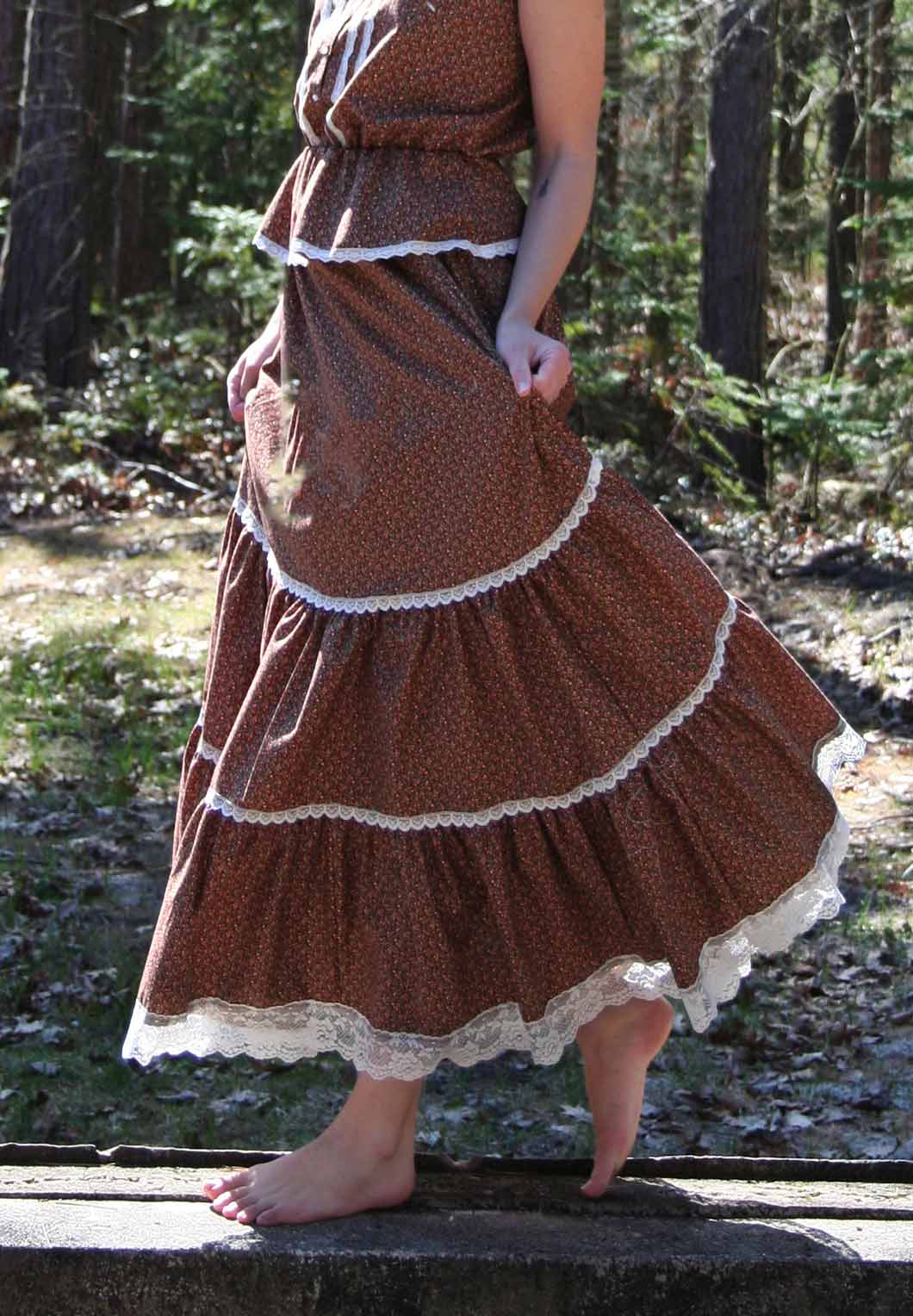
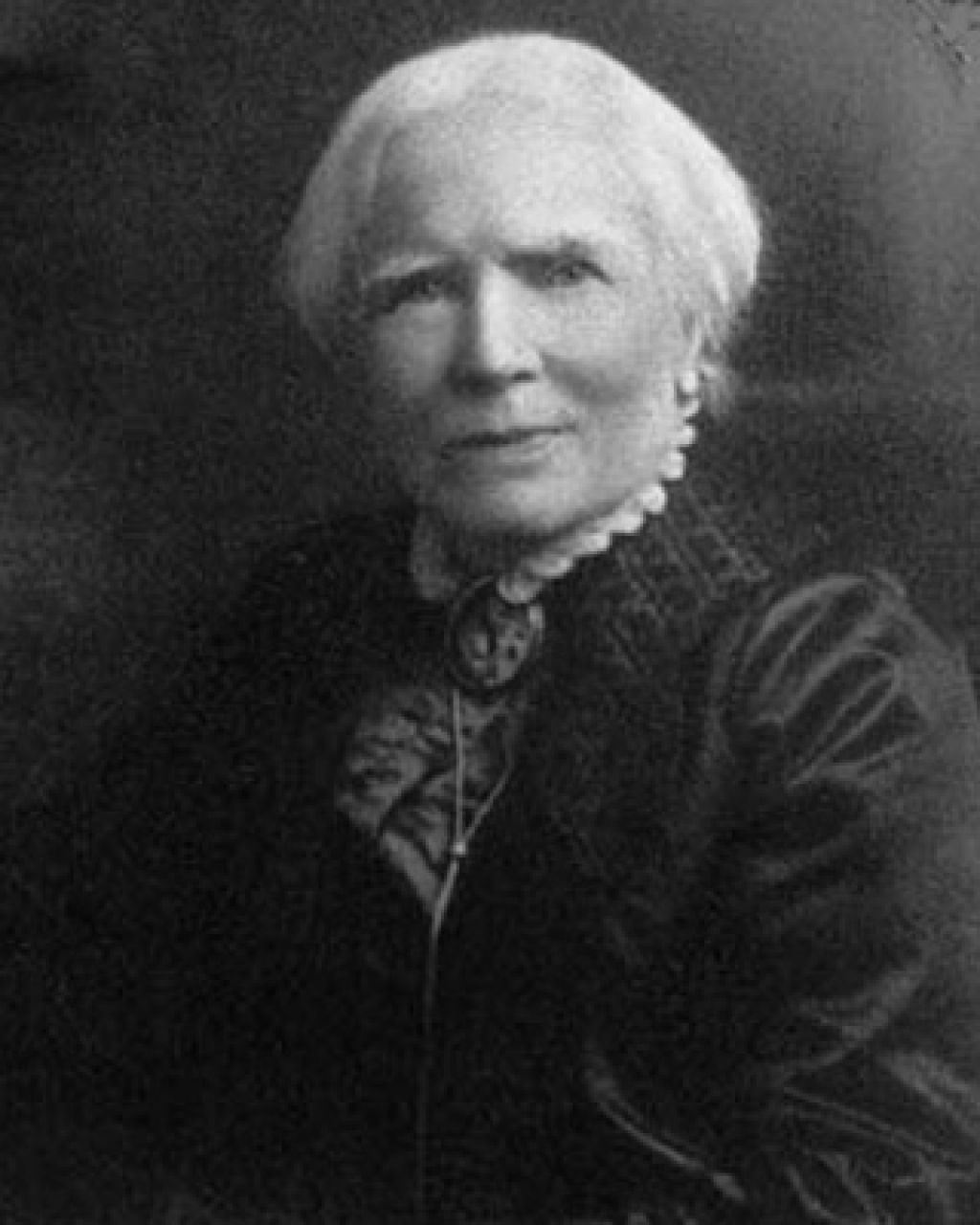
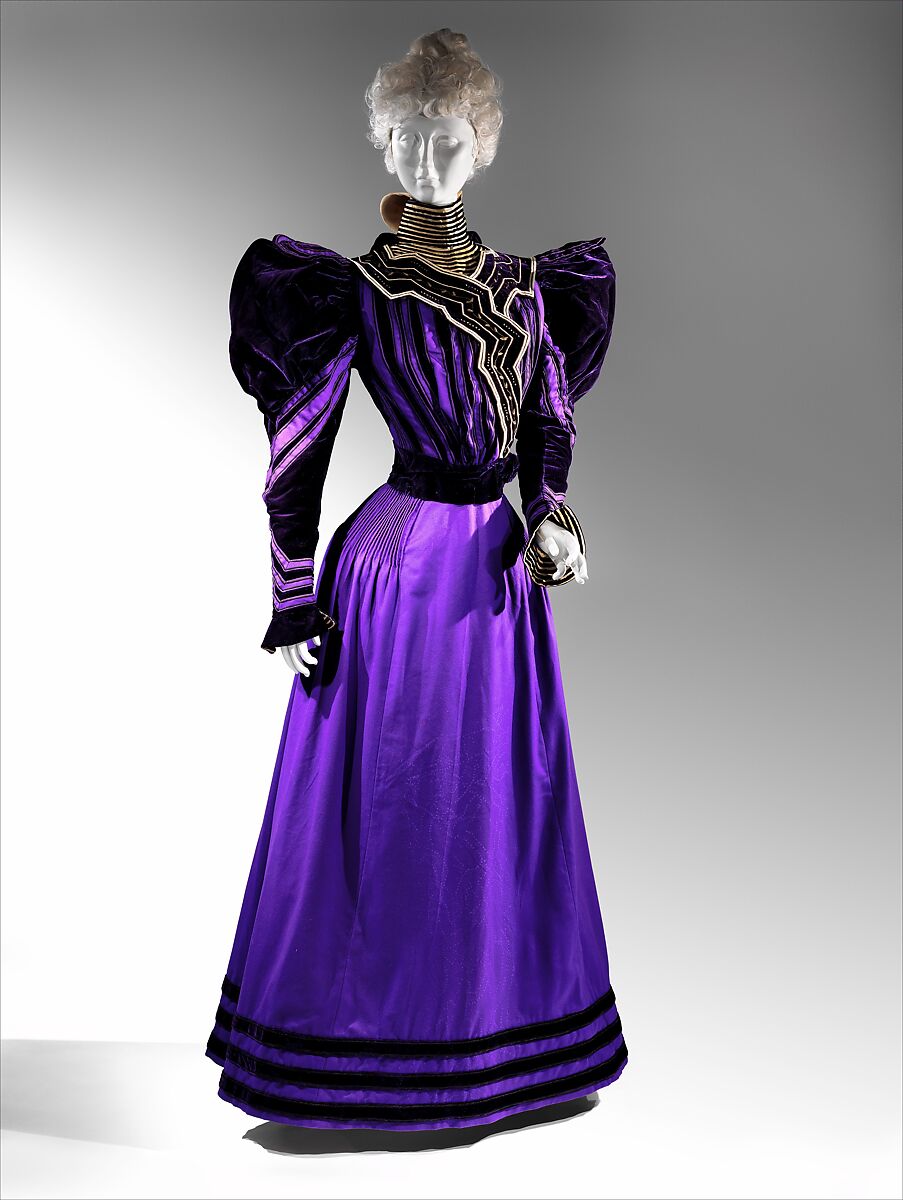

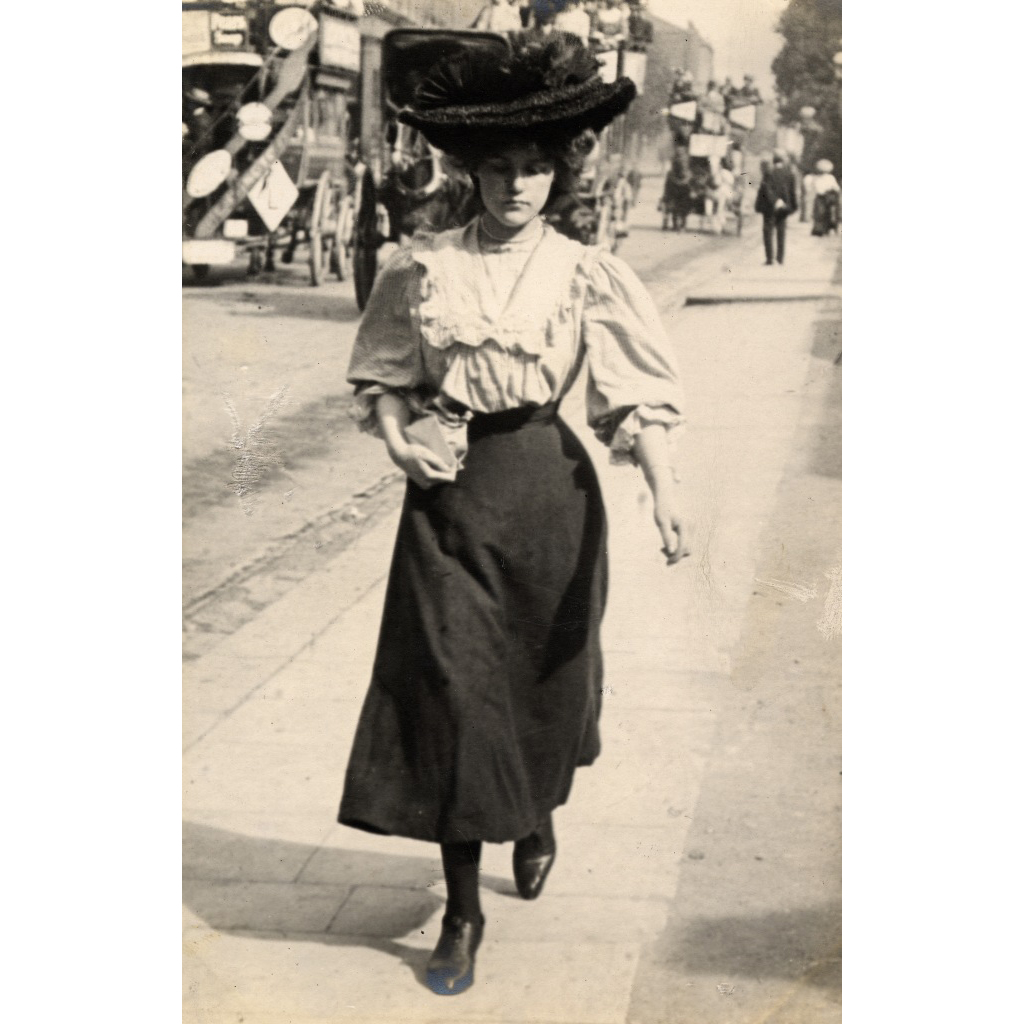
Thank you so much for reading!
Hi Janice,
I love reading these blogs about clothing in the past. As a yet to be published author who has written some historical stories I always want to see how the women would’ve dressed and looked in the past.